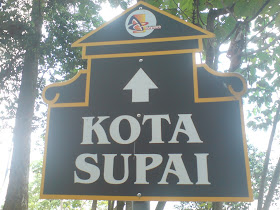
Kota Kuala Linggi (Fort Supai) is located at Kuala Linggi, a border between Melaka and Negeri Sembilan. Also known as the Dutch Fort, it was built by the Dutch atop of a hill due to its strategic location where the Linggi River could easily be guarded.

All ships has to pass through the Linggi River before entering Kuala Linggi or the Straits of Melaka. Fort Supai was gazetted as a historical monument under the Malaysia Antiques Act of 1976.
The fort was built as a result of the war between the Dutch and the Bugis people. It was built mainly for the purposes of tax collections rather than for war or act as a bastion to defend their strategic interest. The war between the Dutch and the Bugis started in 1756 and ended somewhere late in the second half of 1757.
Both the Dutch and the Bugis jointly built this fort as a memento of their friendship and a peace treaty was signed at the fort on 1 January 1758. Under the treaty, the ruling chiefs were allowed to retain their positions but enabled the Dutch to take control of the fort and monopolised the tin trading that was quarried in the interior of the Linggi River and the Rembau River. The Dutch finally abandoned the fort in 1759 because of the continuing relationship with the Bugis.

The name of the hill is unknown but it was usually referred to as Sepoy’s Hill (Bukit Supai). Previously, this fort was known as Fort Filipina by the Dutch, named after the daughter of the Dutch Governor, Jacob Mosel.
